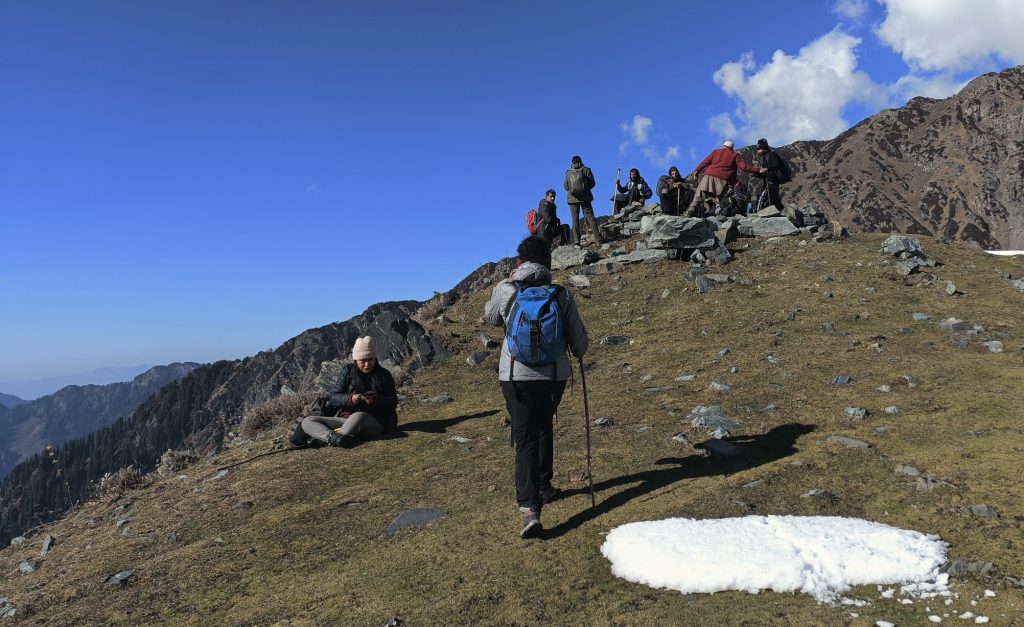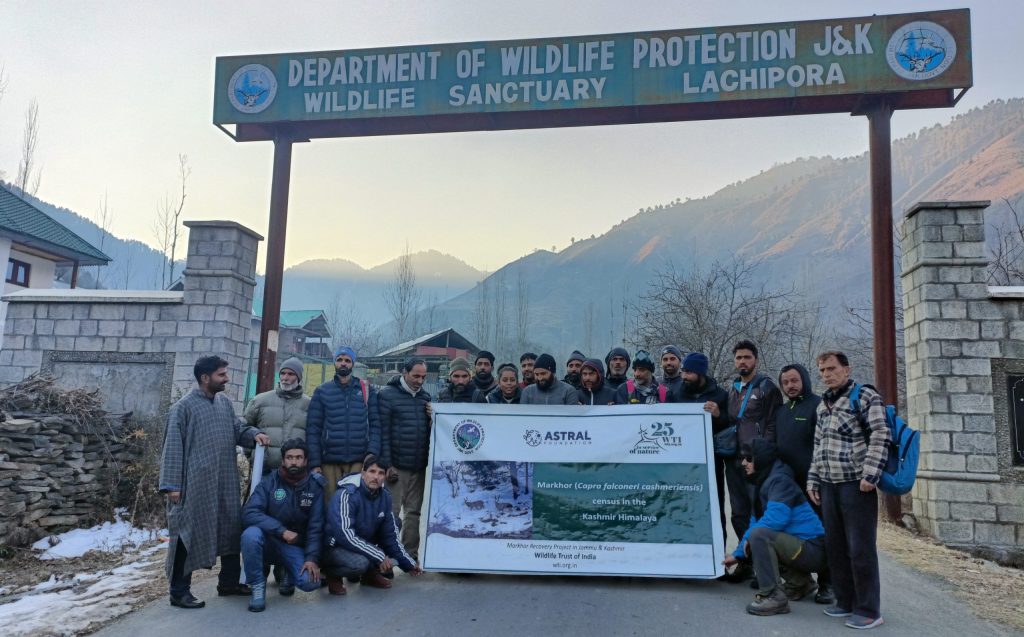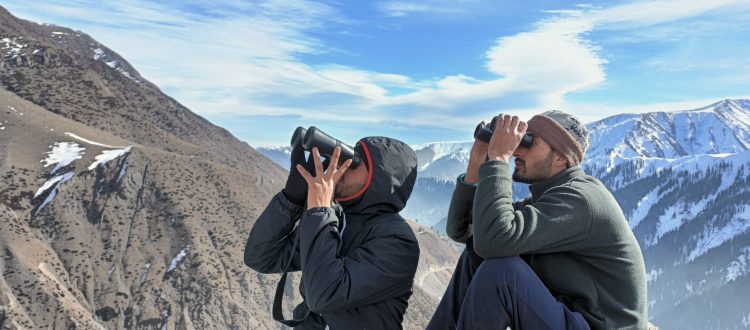WTI wraps up the annual Markhor census in Jammu and Kashmir
Srinagar, 9th January 2023: Kashmir or Pir Panjal markhor Capra falconeri cashmeriensis, is one of the subspecies of the world’s largest goat, Markhor Capra falconeri – a threatened caprid native to Central Asia. In India, the flare-horned subspecies, also referred to as the Pir Panjal markhor, occurs only in the Union Territory of Jammu and Kashmir. The population in the region has shrunk in all its historical distribution ranges and has reduced by approximately 60% compared to that in 1947. Major factors causing this decline in the population and distribution range include livestock grazing predominantly, developmental activities like construction of roads, high-tension power lines, and border fencing and enhanced poaching due to limited vigilance and weak enforcement of laws during the long-lasting state of political instability and conflicts in the Kashmir Himalaya.

Markhor survey team in Tatakutti | Photograph by Tanushree Srivastava
With this background, Wildlife Trust of India started field surveys in 2004 for the first time to monitor the markhor population in the Kashmir Himalaya. Since then, we have been carrying out census at regular intervals of two to three years to monitor the status of markhor population in two of the Protected Areas (PAs) that hold viable populations in the Kashmir Himalaya – Kazinag National Park (KNP) and Hirpora Wildlife Sanctuary (HWLS). The last 2021 census reported 155 individuals in KNP and very low sightings in HWLS. This year, the markhor census as carried out in the three PAs – the KNP, HWLS and the Tatakutti WLS to assess the current status and estimate the markhor population in the region.
We started the process by getting efficient and eligible nominations from the Department of Wildlife Protection, volunteers from local Universities, and people from local communities to assist as local guides in different areas. Following this, we organized a one-day training programme to train all the nominees with the detailed methodology to be followed for carrying out the markhor census. A total of 90 trainees attended the training programme including nearly 45 officials from the Department of Wildlife Protection (DWP), J&K, 30 ‘Markhor watchers’ and 15 research students from various Universities. The markhor census was started in the Tatakutti WLS followed by Hirpora WLS and Kazinag NP including Limber and Lachipora WLSs and Naganari Conservation Reserve. We started the census on the 1st of December 2022 and completed it on the 9th of January 2023. All participants camped in the forest to carry out the survey and followed the methodology up to the mark. At the end of the survey, each participant was handed over a certificate of participation.

Markhor census team including Dept. Staaff, Research scholars and Local guides | Photograph by Tanushree Srivastava
We expect the results from this census to enable us to generate information on the current status of the Markhor population in the UT of Jammu and Kashmir and to plan and also suggest the local management authorities especially the Department of Wildlife Protection, J&K for future long-term initiatives and efforts to be taken towards the conservation of markhor at a landscape level.
WTI’s Markhor Recovery Project is supported by the Department of Wildlife Protection, J&K and Astral Foundation.









